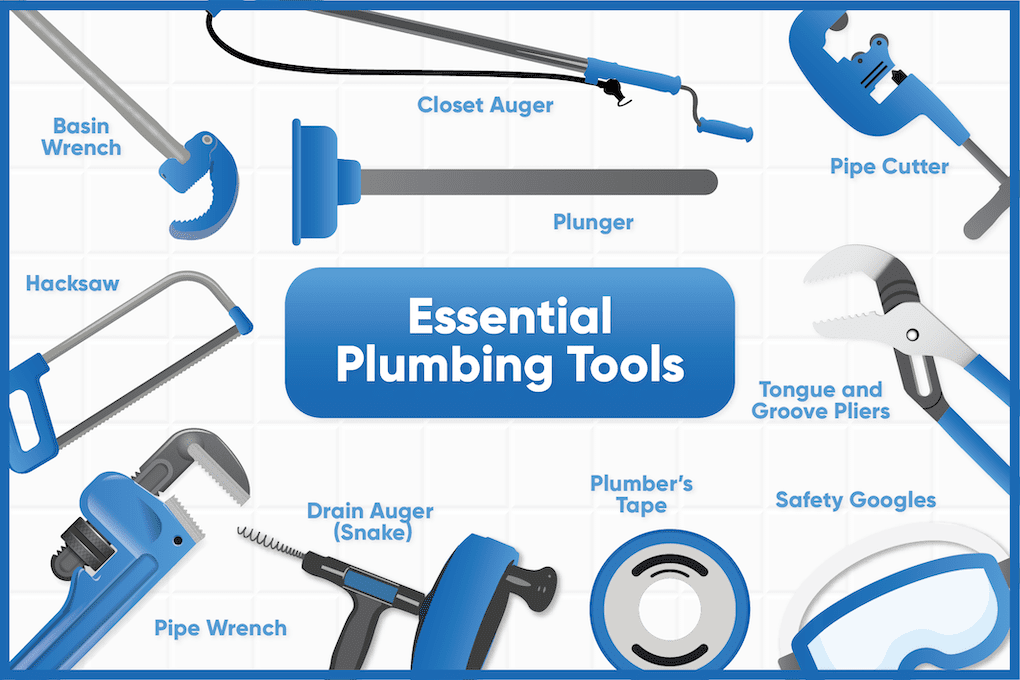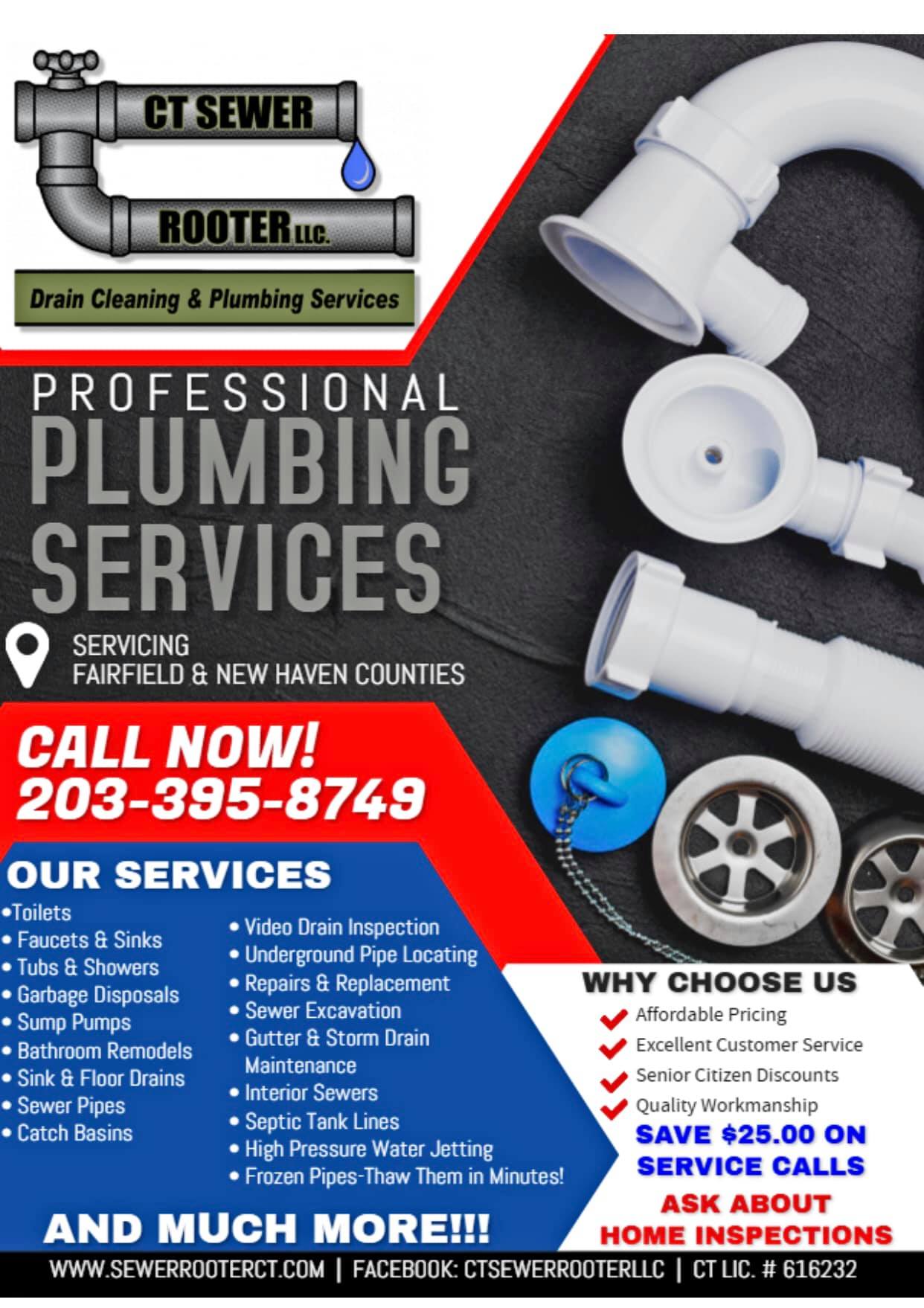Welcome to the Ultimate Plumbing Guide for property owners! This comprehensive guide will empower you to handle common plumbing issues and perform preventive maintenance like a pro. From clogged drains to water leaks, we’ll walk you through step-by-step solutions. Remember, if you ever encounter a challenge that’s beyond your comfort zone, our team at CT Sewer Rooter is just a call away.
Table of Contents
- Introduction to Plumbing Maintenance
- Dealing with Clogged Drains
- Fixing Common Water Leaks
- Maintaining Your Water Heater
- Understanding and Preventing Sewer Issues
- Garbage Disposal Tips
- Essential Tools for Simple Plumbing Repairs
- Dos and Don’ts of Plumbing
- When to Call for Professional Help
Introduction to Our Plumbing Guide
Taking care of your plumbing system can save you time and money. Start by:
- Regular Inspections: Check faucets, toilets, and pipes for leaks or signs of damage.
- Water Pressure: Ensure your water pressure isn’t too high, which can strain pipes and fixtures.
- Annual Drain Cleaning: Prevent clogs by scheduling professional drain cleaning.
Dealing with Clogged Drains
Simple Steps to Unclog Drains:
- Boiling Water: Slowly pour boiling water down the drain to break down grease and soap.
- Baking Soda and Vinegar: Mix 1/2 cup of baking soda with 1/2 cup of vinegar. After 15 minutes, flush with hot water.
- Plunger: For sinks, use a cup plunger. For toilets, use a flange plunger. Push down gently, then pull up sharply.
Fixing Common Water Leaks
Repairing a Dripping Faucet:
- Turn Off Water: Locate the shutoff valve under the sink and turn it off.
- Disassemble Faucet: Remove the handle, cap, and nut. Replace the worn-out washer.
- Reassemble and Test: Put everything back together, turn the water on, and check for leaks.
Maintaining Your Water Heater
Importance of Water Heater Maintenance:
Regular maintenance of your water heater offers several benefits:
- Efficiency: Removing sediment buildup enhances heating efficiency.
- Longevity: Proper care can extend the water heater’s lifespan.
- Cost Savings: A well-maintained heater operates more efficiently, reducing energy bills.
Maintaining Your Water Heater:
- Turn Off Power: For electric heaters, switch off the circuit breaker. For gas heaters, turn off the gas supply.
- Shut Off Water: Close the cold-water supply valve.
- Attach Hose: Connect a hose to the drain valve and place the other end in a safe drainage area.
- Flush the Tank: Open the drain valve and let water flow until it’s clear of sediment.
- Turn On Water: Close the drain valve, open the cold-water supply valve, and let the tank fill.
- Turn On Power: Restore power or gas supply. Electric heaters may need a few hours to heat up.
Life Expectancy of Water Heaters:
The lifespan of a water heater varies:
- Gas Water Heaters: Usually last around 8 to 12 years.
- Electric Water Heaters: Typically last around 10 to 15 years.
Dos and Don’ts of Plumbing
Understanding the right practices can save you from plumbing mishaps. Here are some essential dos and don’ts to keep in mind:
Dos:
- Do Regular Maintenance: Inspect your plumbing system periodically to catch issues early.
- Do Use Plunger Correctly: Create a tight seal before plunging to ensure effective unclogging.
- Do Know Your Shut-Off Valves: Familiarize yourself with main and fixture-specific shut-off valves.
- Do Dispose Wisely: Avoid flushing non-biodegradable items down toilets or sinks.
- Do Use Drain Covers: Install drain covers to prevent debris from clogging pipes.
Don’ts:
- Don’t Over-Tighten: Avoid overtightening fittings to prevent damage.
- Don’t Use Chemical Drain Cleaners: Harsh chemicals can damage pipes over time.
- Don’t Ignore Leaks: Promptly address leaks to prevent water damage and mold growth.
- Don’t Use Hot Water on Frozen Pipes: Thaw pipes with gentle heat to prevent bursting.
- Don’t DIY Complex Issues: If unsure, consult professionals to prevent costly mistakes.
Essential Tools for Simple Plumbing Repairs
Having the right tools can make plumbing repairs easier and more effective. Here’s a list of essential tools to keep on hand:
- Plunger: Essential for unclogging sinks and toilets.
- Adjustable Wrench: Used to tighten or loosen nuts and bolts.
- Pipe Wrench: Designed for gripping and turning pipes and fittings.
- Plumber’s Tape (Teflon Tape): Wrapping threads with this tape helps prevent leaks.
- Pipe Cutter: Used to cut pipes cleanly and accurately.
- Bucket: Handy for catching water during repairs.
- Hacksaw: Useful for cutting pipes and other materials.
- Pliers: Versatile tools for gripping, twisting, and cutting.
- Screwdrivers: Both flathead and Phillips-head for various screws.
- Flashlight: Provides visibility in tight spaces.
- Utility Knife: Cuts through materials like pipes or sealants.
- Caulk Gun: For applying caulk around fixtures.

Courtesy frontenergy.com[1]
Understanding and Preventing Sewer Issues
Preventive Measures:
- Proper Disposal: Don’t flush items like wipes, cotton balls, or paper towels.
- Tree Roots: Plant trees away from sewer lines to prevent root intrusion.
- Biannual Inspections: Regularly inspect your sewer lines for signs of damage.
Garbage Disposal Tips
Using Your Garbage Disposal Wisely:
- Run Cold Water: Always use cold water when grinding food to prevent grease buildup.
- Avoid Hard Items: Don’t put bones, fruit pits, or fibrous foods into the disposal.
Removing Objects from a Jammed Garbage Disposal:
- Turn Off Power: Before attempting anything, disconnect the power to the disposal.
- Check for Objects: Use a flashlight to look inside and locate the object causing the blockage.
- Use Pliers or Tongs: If you can see the object, use long pliers or tongs to carefully extract it.
- Use the Reset Button: After removing the object, press the reset button on the bottom of the disposal.
- Turn Power Back On: Reconnect power and test the disposal with cold water.
When to Call for Professional Help
While DIY solutions work for many situations, some issues require expertise:
- Burst Pipes: Shut off the water, then call for professional repair.
- Sewer Backups: If multiple drains are clogged, contact our Sewer Cleaning service.
- Water Heater Malfunctions: For leaks or heating problems rely on our experts.
CT Sewer Rooter
Your Trusted Partner for Residential and Commercial Plumbing Services in Connecticut
Services: 24/7 Emergency Plumbing, Water Heater, Plumbing Residential Services, Commercial Plumber, Hydro Jetting, Drain Cleaning, Sewer Cleaning, Water Leaks, Leak Detection, Garbage Disposals, Sewer Repair
For personalized assistance and professional plumbing solutions, visit us at www.ctsewerrooter.com. Remember, regular maintenance keeps your plumbing system in top shape.
Disclaimer: This plumbing guide is intended for informational purposes. Perform repairs only if comfortable. For complex issues, seek professional help.
Plumbing Guide Q&A
Q: What are basic plumbing skills? A: Basic plumbing skills include knowing how to fix leaks, unclog drains, replace faucets, and understand pipe connections.
Q: What are the basic parts of plumbing? A: The basic parts of plumbing include pipes, fittings, valves, fixtures (sinks, toilets), and traps.
Q: What are the three types of plumbing? A: The three types of plumbing are water supply, drainage, and vent systems.
Q: What are the 4 main parts of standard house plumbing? A: The main parts of standard house plumbing are the water supply system, drainage system, fixtures, and vents.
Q: Is plumbing a hard skill to learn? A: Plumbing can be challenging to learn due to the complexity of systems, but with training and practice, it can be mastered.
Q: Is there a lot of math in plumbing? A: Basic math skills are important in plumbing for measurements, calculations, and pipe sizing.
Q: What 5 tools are most common in plumbing? A: The most common tools in plumbing are pliers, wrenches, pipe cutters, tape measures, and plungers.
Q: What is a typical day of work for a plumber? A: A plumber’s day may involve fixing leaks, installing fixtures, unclogging drains, and conducting maintenance.
Q: What is the most important part of plumbing? A: Proper installation and maintenance of pipes and fixtures are crucial for efficient plumbing systems.
Q: What is the easiest type of plumbing? A: Simple repairs like fixing a leaky faucet or unclogging a drain are considered easier tasks in plumbing.
Q: What is the new type of plumbing called? A: PEX (cross-linked polyethylene) piping is a newer type of plumbing material known for its flexibility and ease of installation.
Q: What is the most common type of plumbing? A: PVC (polyvinyl chloride) piping is one of the most common materials used in plumbing due to its durability and affordability.
Q: What are the 2 sub systems in plumbing? A: The two sub-systems in plumbing are the water supply system and the drainage/vent system.
Q: Why is ABS pipe prohibited? A: ABS (acrylonitrile butadiene styrene) pipes are prohibited in some areas due to concerns about its performance in certain conditions.
Q: What are 3 things plumbing plans include? A: Plumbing plans include pipe layouts, fixture locations, drainage pathways, and venting configurations.


0 Comments